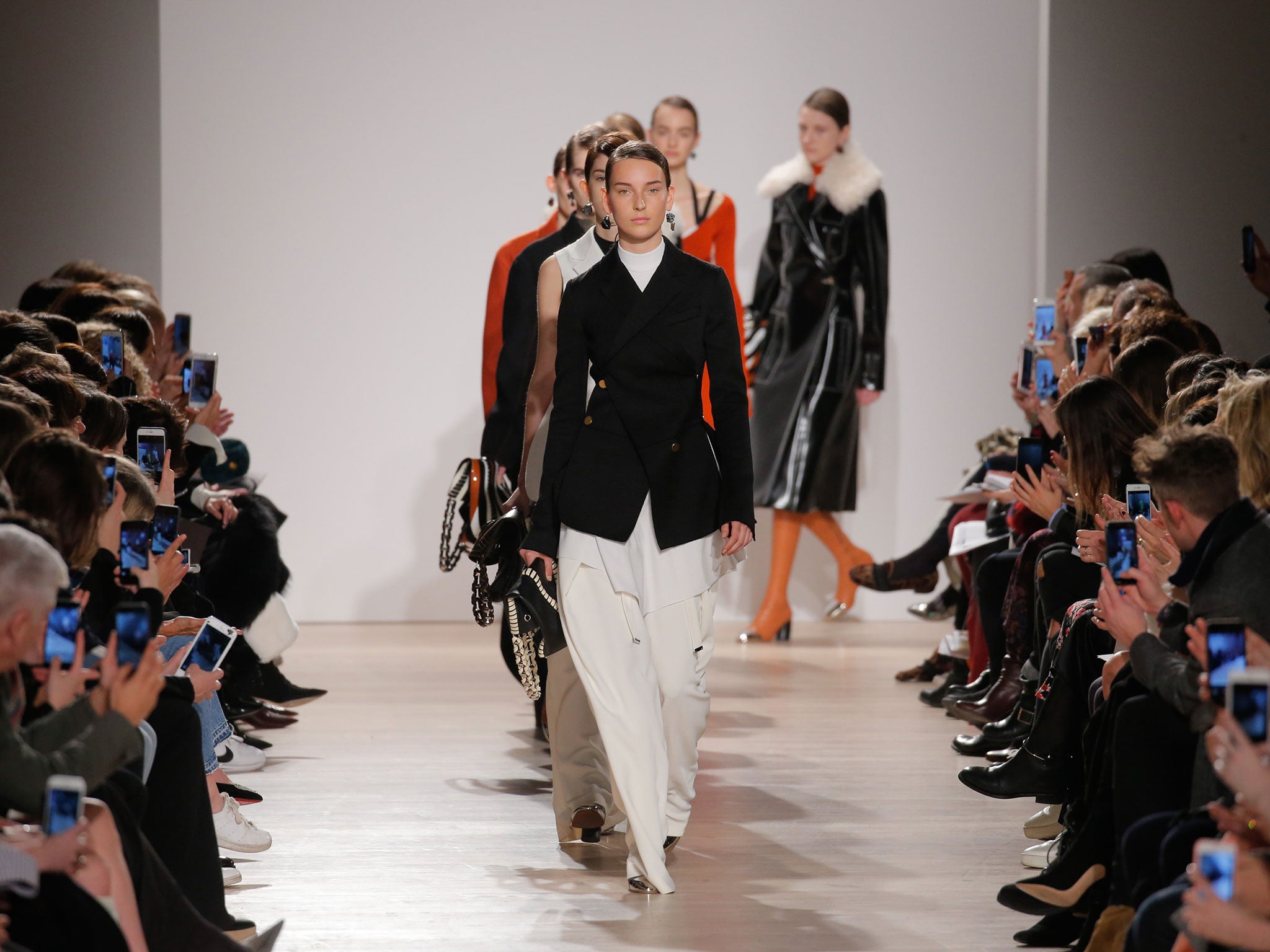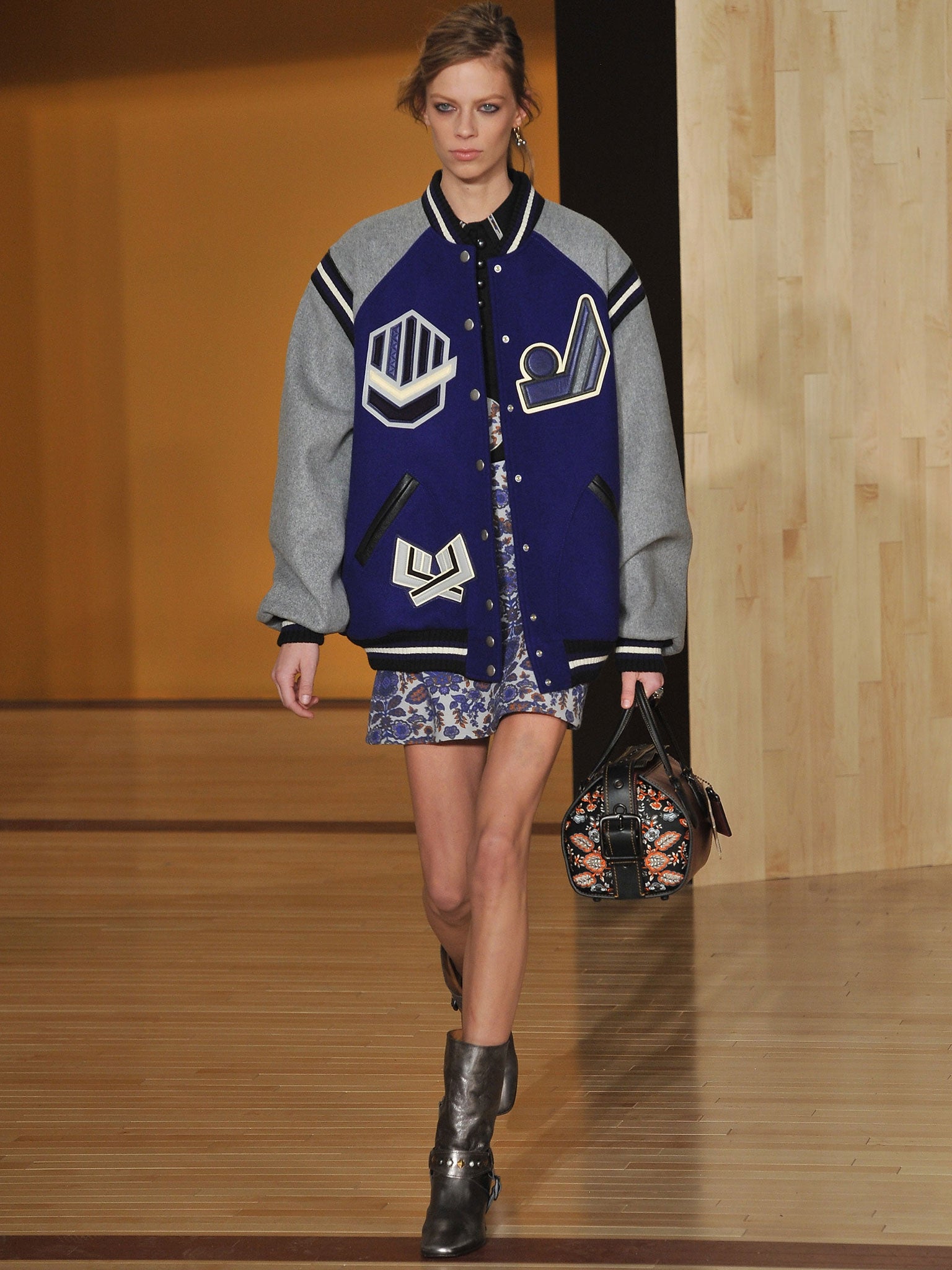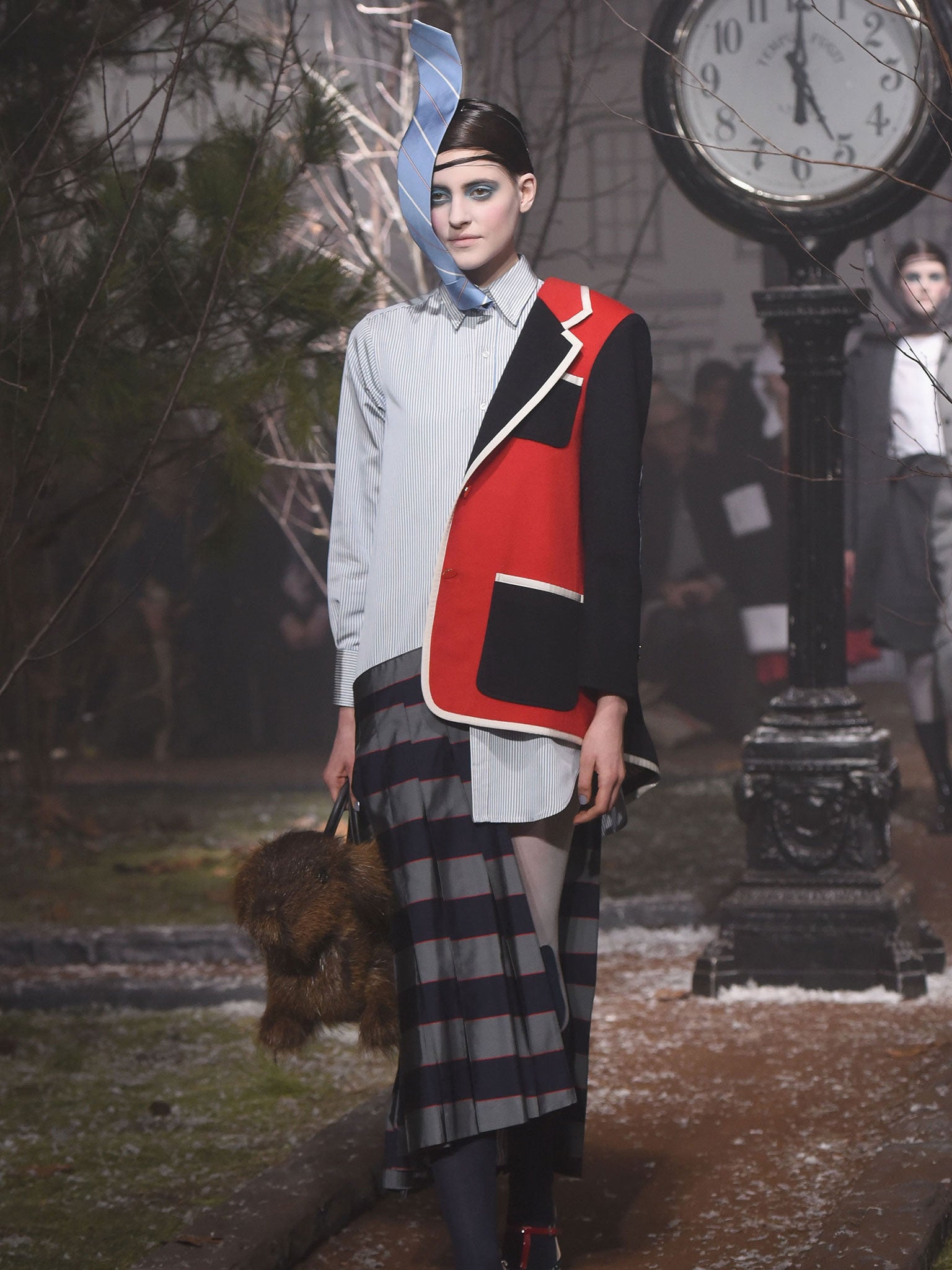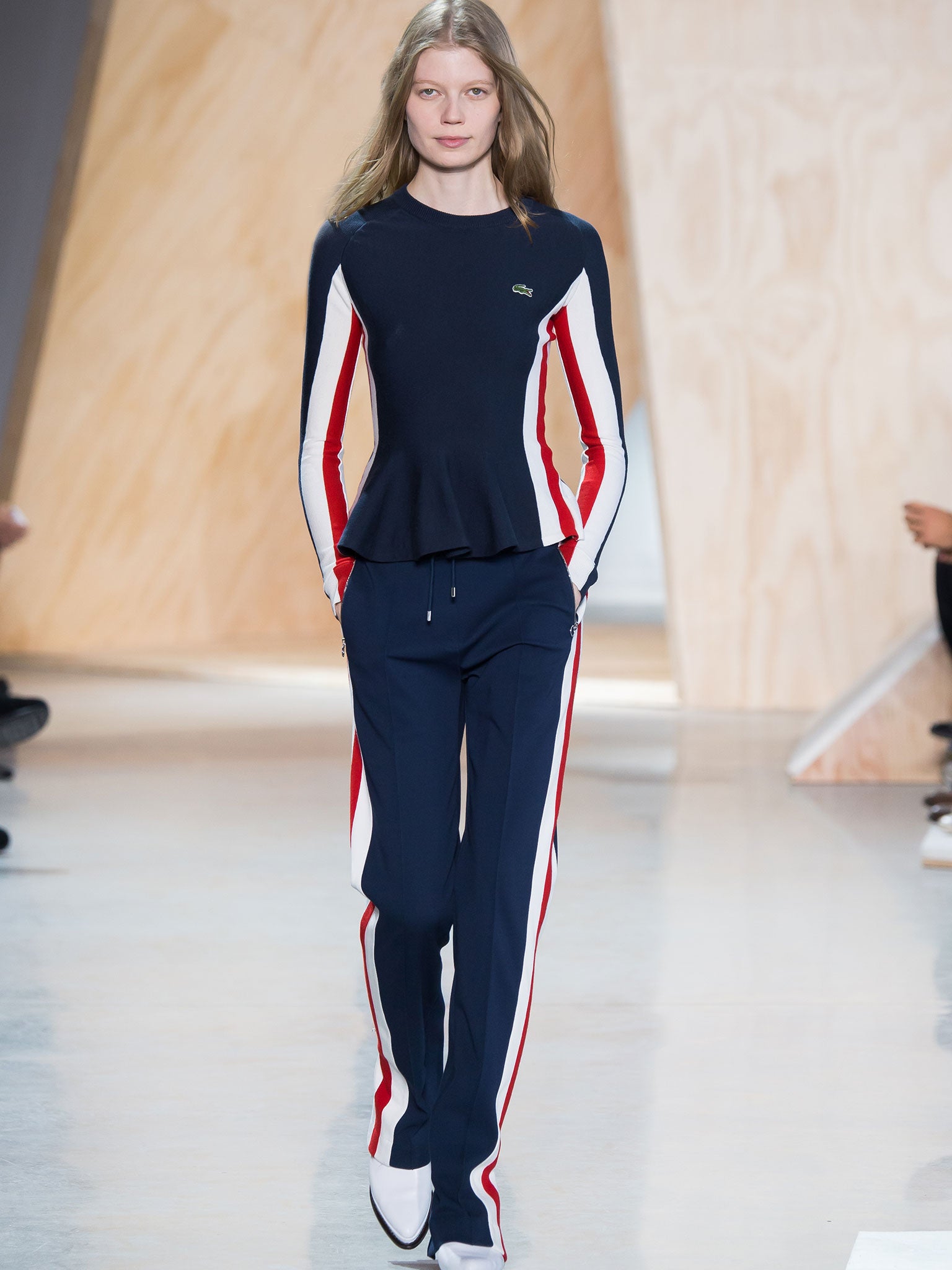New York Fashion Week: What's relevant in the autumn/winter 2016 shows
Hawking lightweight clothes in sub-zero temperatures, New York's autumn/winter 2016 shows felt disconnected from reality. But look hard and there was good – and relevant – stuff, says Alexander Fury

It's a higgledy-piggledy fashion system out there. But hasn't it always been? Hasn't the outside world always been baffled by the idea of hawking coats in July and bikinis in January, while in fashion it somehow, somewhere, makes perfect sense?
Hence, in a spring polar vortex, New York designers showed autumn/winter 2016 clothes that were sleeveless, backless, sometimes simply worthless. Not that they lacked value monetarily, of course – they all cost a lot – but you wondered what they added to the sum whole of what people want to wear today. Because that's what fashion is about, if you're up on your soapbox and tub-thumping – it's about showing something different, something new. It's about setting the pace, not following the herd. The latter, of course, is the easier option, delivering sleek commercial product, streamlined and dumb.
"Commercial" and "product" are two words you hear a lot in the USA, where fashion is big on business and often short on creativity. That said, there were a few shining moments in New York's autumn/winter calendar that didn't feel like they came about by sifting through a checklist of pre-ordained and pre-packaged trends decided months in advance.
These rarities caught on to the odd flavour of now, something you would dub the "zeitgeist" if that phrase wasn't so witheringly sneer-worthy. It's the hard-to-define, in-the-ether thing that makes disparate, unconnected designers alight on the same idea, at the exact same time, and can make your hair stand on end, because it elucidates exactly what the mood of now may be. That's what makes fashion worthwhile.
Those moments will become far fewer, and farther between. Designers are gearing up to manufacture tens of thousands of units far ahead of their catwalk show dates, ready to dispatch them immediately to consumers presumed to be hungry for a fix. A few are eschewing labelssuch as "spring/summer" and "autumn/winter" entirely, in favour of a seasonless, seemingly never-ending flow of product. Is it good, bad, or just different? I suppose that depends on the strength of the designer, the boldness of their idea, and if they're, somehow, able to tap into the "wow" of "now" a little further ahead of schedule.
I went to see Jack McCollough and Lazaro Hernandez of Proenza Schouler in their studio on Tuesday afternoon: they talked me through a flat board of looks, a rail of clothes, and a few tables of fabric waiting to be sewn into clothes. Look 36, a lace dress dimpled with latex that resembled a suppurating skin complaint (meant as a compliment) existed on paper only, chopped and collaged from computer print-outs and still in pieces on a table. And yet, Proenza Schouler is one of those labels offering wear-it-now styles – "early edition", they call it – eight available as of yesterday.

"It was kind of tricky to pick before we'd even seen any of the actual clothes," said McCollough, grimacing a little. You get that. Then he said something that stuck: "So much of what we do is in that moment – but in that moment, you want to offer it out right away."
Maybe that's an optimistic way to look at this new feel for catwalk-motivated instant purchase: not about fast cash, but fast ideas. Hernandez and McCollough have plenty of those, which is what makes their collections worth remarking on. This time, they showed in the Whitney Museum. Art has often inspired them, and they've shown at the Whitney before, in its previous uptown guise. This time, it was process art they were interested in, so they garment-printed and embroidered, unravelling and plucking at their clothes as if they were still works in progress.
"This kind of process artists' work wasn't so much about the finished, end product," said Hernandez. "Their art was about the making of it." Maybe that's a good metaphor for fashion, which right now is focused purely on end product rather than the joy of making. The best shows of New York had great product, but also spontaneity and a sense of the hand.

They also felt decidedly American – "Proenza Schouler" sounds unpronounceably exotic, but it's just the combined maiden names of the mothers of a pair of all-American guys making good clothes. The artists they focused on – Stella, Serra, Robert Smithson – were all American, too. And it's interesting to think of America as a selling point for these clothes.
What does American fashion encompass? A certain ease, maybe? Sportswear? Or maybe even the comparative cleanliness of Seventh Avenue couture? The former was well on display at Coach, where Stuart Vevers based his collection on ice hockey uniforms and varsity dressing, and showed in a recreation of a school gym; and also at Lacoste, French in name but American in spirit, with upscale but not jumped-up sportswear that was designed but not overly so.
There was even something American in Thom Browne, in its Yankee tricolour palette, and topsy-turvy, Toto-I've-a-feeling-we're-not-in-Kansas-any-more misbuttoned and displaced tailoring like an MGM fashion show in a twister. Browne's models padded around a square straight from Henry James or Edith Wharton, warped American history brought back to life.

History always hangs heavy at Oscar de la Renta, where Peter Copping took to the ring for his latest round with the label's legacy. I imagine that can sometimes feel like a boxing match, wrestling with a past that, despite de la Renta's death 18 months ago, still lives on the backs of his faithful clients. Copping sent out a collection that was good, not great, but worthy of merit. His colour sense is extraordinary, which sounds like an old-fashioned thing to say, and probably is, especially as you had to be there to really get hit with the suckerpunch of his anthracites, brittle toothpaste aqua, bruised tomato and Schiaparelli pink. No stream would show those off.
I'm sure women would love to buy those clothes now; but they're also good enough to warrant the wait. Maybe designers should be concentrating on that – making great stuff – rather than churning the mediocre out ever-faster. De la Renta's clients were willing to wait then; rich women (and men, for that matter) will wait now. Maybe we all should.
Join our commenting forum
Join thought-provoking conversations, follow other Independent readers and see their replies
0Comments